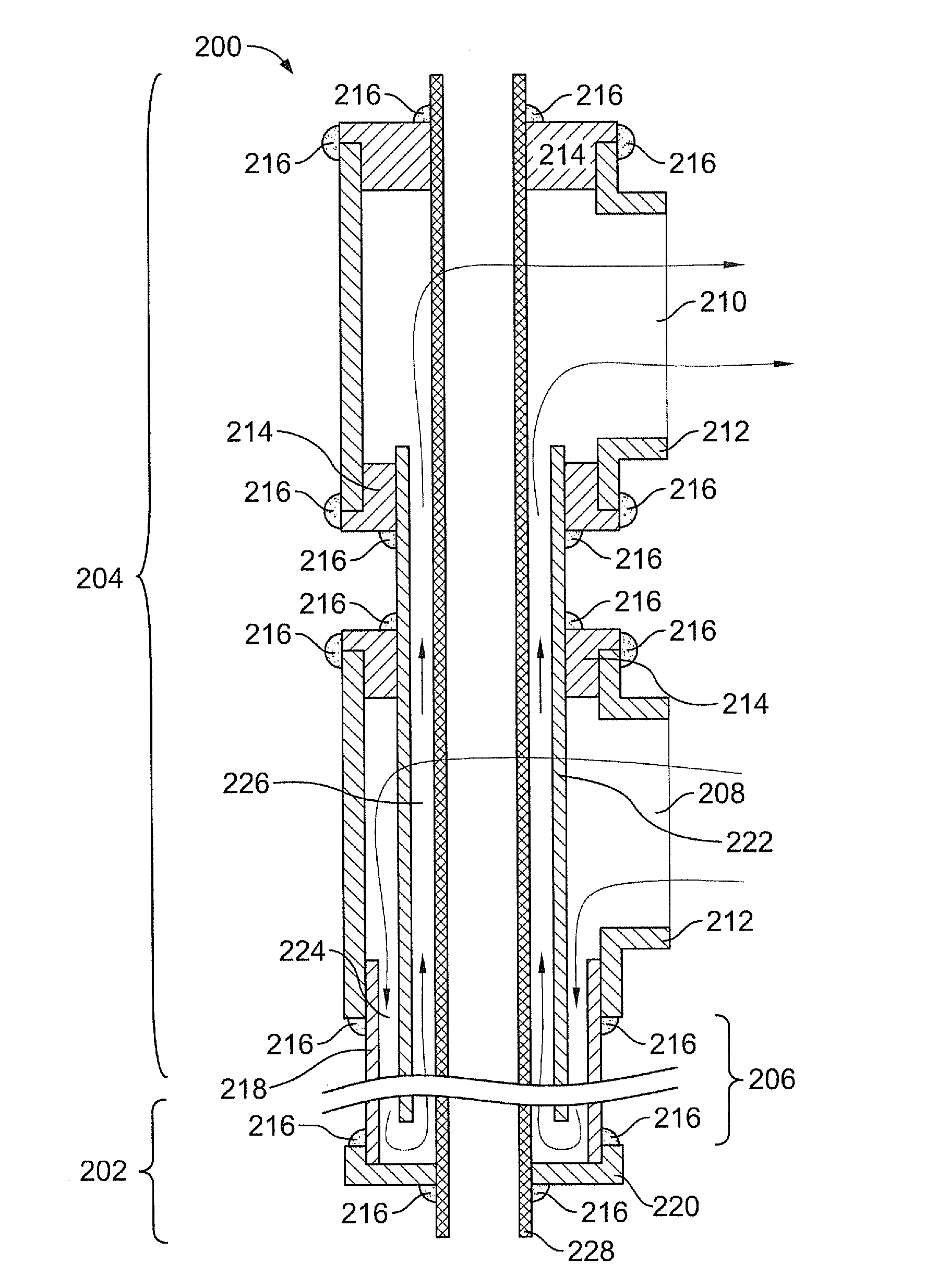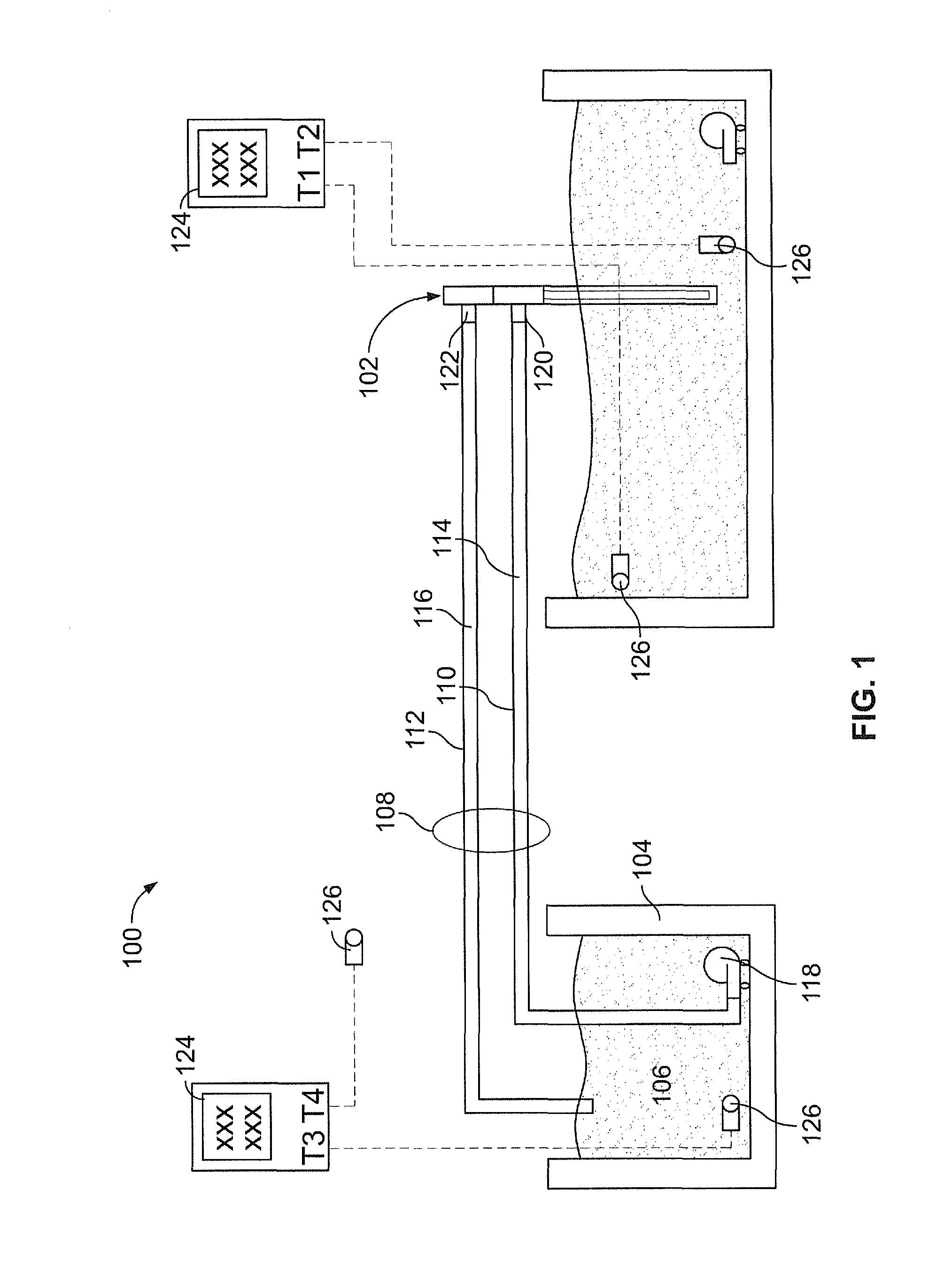Devices and Methods For Controlling Patient Temperature
a technology for controlling patient temperature and devices, applied in the field of devices and methods for controlling patient temperature, can solve the problems of low interest in clinical use of mild therapeutic hypothermia, lack of concrete guidelines for cooling patients, and low enthusiasm for the use of therapeutic hypothermia
- Summary
- Abstract
- Description
- Claims
- Application Information
AI Technical Summary
Benefits of technology
Problems solved by technology
Method used
Image
Examples
example 1
Cooling of a Model System
[0139]An experiment was conducted to quantify the approximate rate of temperature reduction achievable by use of an exemplary embodiment of the present technology. Target temperature reduction is 4° C. Data were collected and plotted on a common X-Y graph, as shown in FIG. 7.
[0140]The arrangement of equipment for this experiment is shown in FIG. 1. A brief description of each piece of equipment is as follows:[0141]1. The heat transfer device 102 was an exemplary embodiment of a heat transfer device according to the present technology[0142]2. An insulated container, 96 cm (l)×36 cm (w)×36 cm (h), containing 88 kg water at the initial temperature shown in Table 1 represented the mass to be cooled.[0143]3. A 110V electric pump, Little Giant Model PES-70 (4.4 L / min free-flow) was used to circulate hot water within the insulated container (2) to maintain homogeneous temperature of water within this container.[0144]4. The heat exchanger 104 comprised an insulated ...
example 2
Operative Temperature Management
[0164]A heat transfer device according to the present technology was utilized in an animal study as described below. The heat transfer region of the heat transfer device was approximately 70 centimeters in length (to accommodate the length of the snout) and had a diameter of about 1.4 centimeters, for a surface area of about 305 cm2.
[0165]A large swine with a mass of 70 kg was chosen to best represent the size and average mass of a human patient. The swine was singly housed in an Association for the Assessment and Accreditation of Laboratory Animal Care, International (AAALAC) accredited facility, with primary enclosures as specified in the USDA Animal Welfare Act (9 CFR Parts 1, 2 and 3) and as described in the Guide for the Care and Use of Laboratory Animals (National Academy Press, Washington D.C., 1996).
[0166]The swine was anesthetized with a pre-anesthetic mix of Telozole / Xylazine, then provided with anesthesia via inhalational route with isoflur...
specific embodiments
[0187]The devices, methods, and systems described herein can be illustrated by the following embodiments enumerated in the numbered paragraphs that follow:
[0188]1. A method for inducing systemic hypothermia comprising:
[0189]inserting a heat transfer device into an esophagus of a patient, wherein said heat transfer device includes a fluid path defined by an inflow lumen and an outflow lumen;
[0190]initiating flow of a cooling medium along said fluid path; and
[0191]circulating said medium along said fluid path for a time sufficient to induce systemic hypothermia in said patient.
[0192]2. The method of paragraph 1, wherein said heat transfer device includes a discrete heat transfer region and said heat transfer region is confined to said esophagus.
[0193]3. The method of paragraph 1, further comprising cooling said medium to a temperature below normothermia.
[0194]4. The method of paragraph 1, further comprising maintaining said patient in a state of hypothermia for at least two hours.
[019...
PUM
 Login to View More
Login to View More Abstract
Description
Claims
Application Information
 Login to View More
Login to View More - R&D
- Intellectual Property
- Life Sciences
- Materials
- Tech Scout
- Unparalleled Data Quality
- Higher Quality Content
- 60% Fewer Hallucinations
Browse by: Latest US Patents, China's latest patents, Technical Efficacy Thesaurus, Application Domain, Technology Topic, Popular Technical Reports.
© 2025 PatSnap. All rights reserved.Legal|Privacy policy|Modern Slavery Act Transparency Statement|Sitemap|About US| Contact US: help@patsnap.com



